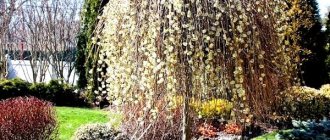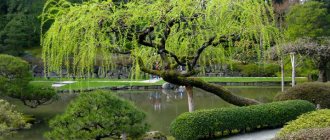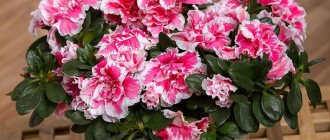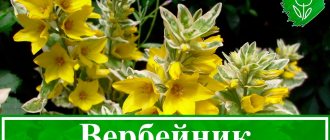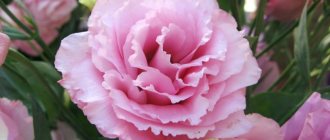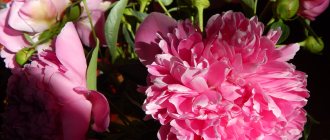Every gardener knows a beautiful, pleasantly smelling plant with erect candle-shaped inflorescences and flat green fleshy foliage. This is a hyacinth. It is very aesthetic, sophisticated, truly spring-like. The panicles of the inflorescences can be painted in bright or pastel shades of white, greenish, pink, purple, lilac and even red. This is one of the earliest flowering flowers, which can be grown both in the open ground and at home. Already at the end of winter, we often see these plants in supermarkets and flower shops. What is hyacinth, what cultivation and care features are associated with growing hyacinth - read in our material.
What to do with purchased blooming hyacinth?
Sometimes amateur flower growers do not have the opportunity to grow hyacinths in a garden or flower bed. In another case, a spontaneous purchase of a potted hyacinth in a supermarket in early spring obliges you to continue caring for and growing the plant at home. There is nothing wrong with this: hyacinths calmly survive and bloom even in artificially collected conditions. We give you some tips to help you choose suitable conditions for cultivating hyacinths at home.
Transfer
Do not forget that hyacinth is primarily a garden plant, although it can be grown very successfully at home. It is better to transplant the hyacinth into another pot after the store immediately after flowering. You can place up to three bulbs in one pot. Avoid contact of the bulbs with each other and with the walls of the pot - it is better to take a larger container. We pour drainage (expanded clay, sand), then soil for flowering plants. It is better if it is mixed with peat: this way you will save yourself from unnecessary feeding, and it will be easier for the plant to adapt. After the above-ground part dies, watering is reduced and the pot is placed in a dark place.
Home cultivation
In order for hyacinths to delight you with regular flowering and a healthy appearance, we recommend observing several conditions for growing at home:
- The soil . The composition must be optimal, the substrate must contain a mixture of earth, sand, peat or humus;
- Place of cultivation. The best option would be to place it on south and south-east windows;
- Lighting . Daylight is required - daylight hours of at least 15 hours in duration. If the windows are north or west, you need to illuminate them with a lamp. However, direct sunlight should be avoided;
- Temperature . Comfortable growth of hyacinth is observed at 20-22 degrees Celsius. When forcing, you need to reduce it to 15 degrees (“spring”);
- Watering . Regular, only on the soil, no need to pour water on the leaves and stem to avoid rotting;
- Feeding . Fertilizers are constantly needed, since hyacinth produces them from the soil very intensively. You can use any universal flower fertilizer.
Botanical description of the plant
Hyacinths have faded: what to do with them next
What is hyacinth? This is a perennial herbaceous bulbous plant 20-40 cm high.
What does hyacinth look like? Juicy bright green leaves are basal, narrow, linear, trough-shaped, up to 20 cm long and up to 1.5 cm wide. There are 4-8 pieces on one plant. They are evenly distributed around the circumference of the bottom of the bulb. The flowering stem is a continuation of the bottom, this is the lower shortened part of the stem. After flowering, the entire above-ground part dries out, a bud forms inside the bulb, which grows, turning into a young bulb, and will bloom next year. Baby bulbs form in the corners of the leaves; they can be separated, but they will bloom only after a few years. The flowers are placed at the top of the stem, forming a raceme. The brightly colored perianth is a bell-shaped funnel with bent petals.
The fruit formed after flowering has the shape of a leathery capsule with three sections, each containing 2 seeds.
Problems of growing hyacinths and their solutions
| The problem and its causes | Solution |
| In the area of inflorescences, rotting and tissue death are observed. The reason is too much watering. | Reduce the number of waterings, reduce soil moisture. |
| Leaves and inflorescences suddenly begin to suffer damage in the form of black/gray dots, craters and pits on the leaves and stem. The reason is the presence of aphids. | Use insecticides to treat insects. Wash the leaves and stem with soapy water. |
| Yellowing and gradual death of leaves are observed. Cobwebs appear in the sinuses. The cause is spider mite infestation. | Remove areas damaged by ticks, as they will not recover. Treat with specialized insecticides intended for flowering garden or indoor plants. |
| Hyacinth does not bloom. The reason is an incorrectly adjusted temperature regime that is not suitable for the plant. | Ensure temperature control in the room if hyacinth is grown at home. Usually there is enough heat, starting from 22 degrees Celsius. |
| The peduncle bends into an unsightly arc, the flowers curl and become smaller at the end of the peduncle. The reason is irregular and chaotic watering, affecting the upper parts of the plant. | When watering, use less water. It is advisable to observe the direction of the stream only towards the soil, and not towards the rosette with leaves and the peduncle itself. |
| Twisting leaves into a spiral. The reason is a lack of light. | Change the place where the flower is located to a more illuminated one. |
| Tilt the plant in one specific direction. The reason is that the bulb in the pot is tilted or the air flow (with the window open) affects the stem. | The problem will be solved by transplanting to a more illuminated place and changing the location of the bulb in the pot. If the cause is in the air, then remove the hyacinth from the open window and protect it from drafts. |
| Deterioration of hyacinth condition, stunted appearance. The reason is a sharp change in cultivation conditions. | Immediately place it in a bright and warm place; in the future, do not suddenly change the location of the hyacinth, as they are very sensitive to changes in climatic conditions. |
| Unpleasant odor from the plant, darkening of the foliage. The reason is total decay. | If an unpleasant odor appears, it is best to get rid of the plant altogether, since the rotting process spreads very quickly and can spread to other bulbs. The plant is thrown away, and the place of growth and everything around is treated with antiseptic preparations and specialized plant fungicides. |
Cutting
Inflorescences in which the lower flowers have begun to bloom are suitable for cutting. It is better to cut hyacinths in the morning or evening - flowers cut during the day quickly wither. It is not necessary to use a knife or scissors: the succulent flower stalks can be easily broken off at the base.
Peduncles placed in water secrete mucus - therefore, 3 hours after cutting, the water is changed, and only after that hyacinths can be used in bouquets. In the future, the water should be changed 2-3 times a day: in this case, the flowers can last up to 2 weeks.
Video about planting hyacinths
Proper lighting and soil for hyacinths. It is much better to plant a flower in open ground. We recommend watching the video!
Growing hyacinth is a process that requires attention to the plant and careful agricultural technology. With proper care, tall candles of hyacinth inflorescences will delight you throughout the flowering period. And the variability of use in various garden and flower groups will pleasantly surprise both beginners and experienced landscape designers of their garden. We wish you good luck in cultivating these amazing and delicate flowers - hyacinths!
Varieties
Currently, breeders from different countries have developed about 400 varieties of hyacinth, which differ mainly in the color and shape of the flowers. The Dutch are especially successful in this matter, selling varietal bulbs in the millions.
Below are photos of hyacinth flowers of the most popular varieties:
Woodstock (Woodstock) – lilac-red flowers, a variety of Dutch selection
Carnegie (Carnegie) - snow-white flowers, a variety of Dutch selection
Chicago (Chicago) - large blue-white flowers, variety from the famous Dutch producer Mosselman Holland BV
Royal Navy - large blue flowers with a narrow white stripe along the edge of each petal
Apricot Passion (Apricot Passion) - flowers of soft apricot color
Ailos is one of the most popular varieties. Compact multi-flowered inflorescence in the form of a candle, large white flowers
Hyacinth variety "Fondant" - a rather rare pink color of the petals
Hyacinth Jan Bos (dark) - photo
Another pink hyacinth - Pink Pearl variety
Deft Blue is a very popular variety
Reproduction
There are several ways to reproduce hyacinths.
- Seeds. Propagation by seeds is suitable for breeders. At the end of the first autumn month, seeds are planted in boxes with humus, leaf soil and sand (2:1:1).
For two years, the seeds are grown in a cold greenhouse. Sprouted bulbs, as a rule, do not look like the mother plant, so gardeners often propagate hyacinths vegetatively.
- Reproduction by children . Reproduction with the help of children is easier than with seeds. But the children develop slowly on the bulbs (up to three children are formed in one year). If they are easily separated from the bulb, then they can be separated and planted. If they do not come off easily, then the children should be left on the bulb, which can be planted in the hole.
- Artificial way . Hyacinths are propagated on an industrial scale artificially by cutting and cutting out the bottom. To do this, you need to take a sharp sterilized instrument and make cuts on the bottom (you can cut it out completely). Then the bulbs are put away for storage, where they form babies.
Story
Hyacinth is native to Asia . It first appeared during the Roman Empire. In the 16th century, sailors brought the seeds of this representative of the flora to their homeland. The plant has taken root well in the humid and mild climate of Holland. It was loved by rich merchants for its extraordinary fragrant aroma. The plant immediately gained wide popularity. In the 17th century, new subspecies of the plant appeared. And by the 18th century, Hyacinth had more than 2,000 different varieties.
All plants had magnificent fragrant flowers that differed in color. A wonderful color scheme was developed. There were both ordinary flowers and plants with double leaves. Some of them even had several main peduncles. At the moment, the main suppliers of seeds and other planting material are Holland and England.
Spreading
The first mentions of flowers appeared in the Middle East and Turkey. The plant was then transported to the countries of Central and Eastern Europe. About 30 species of hyacinth are now found in the wild, but only 3 are included in this family.
Plants are often found on the Mediterranean coast, as well as in the regions of Asia Minor and Central Asia.
Hybrid varieties of hyacinths are widespread almost everywhere. This culture prefers bright areas with little groundwater content. The culture is highly resilient, so it is not afraid of frost and drought.
Features of care after flowering
There is no definite answer when the primrose blooms - it depends on the variety and the climate in the region. Flowers can appear both in March and May, lasting from one to two weeks, in rare cases up to a month. As a rule, blue hyacinths bloom first, followed by pink ones, then white and red ones, then lilac ones and the last ones are yellow ones.
The bulbs regenerate after the plants flower .
Their short stay in the soil is recommended. After a slight wilting of the bushes, it is necessary to reduce the number of waterings. Also during the same period it is necessary to add fertilizer to the soil. Feeding the bulbs promotes growth and flowering in the coming season.
The bulbs must be removed from the ground at the moment when the foliage turns yellow.
What do we have to do?
In the first half of July, the above-ground part of the plant is removed , and the bulbs are removed, washed and dried. The damaged copies are then destroyed. If there are underdeveloped children, then the bulbs must be left for growing. All specimens must be treated with a disinfectant solution before storage.
After these manipulations, the bulbs should be kept for one to one and a half weeks in a well-ventilated room at a temperature of +17 to +20˚С. To do this, they should be laid out on clean paper, and then distributed separately into paper bags. Proper processing and storage of specimens is the key to future growth and development of plants. At this time, the planting material acclimatizes and the scales dry out.
If the summer is hot, then air access to the bulbs must be provided. About three weeks before planting, the temperature in the room with the bulbs should be lowered to +16 °C - this will help them adapt before planting.
Digging up the bulbs
The bulbs must be dug up every season . If this is not done, then next season the hyacinth will be sick and bloom poorly. Also, by removing specimens from the ground, you can control the number of spoiled bulbs and regularly separate the children.
It is necessary to dig up the bush until the foliage dies and falls off. You can use a shovel for this, because... sometimes the bulbs are located deep in the ground.
After digging the bulbs, they must be rinsed under running water and placed in a solution of Karbofos (3–4%) for half an hour.
Then they are placed in a dark, well-ventilated place for a week. The air temperature should fluctuate around 20˚C.
Storage
During storage of the plant, an inflorescence is formed. After the bulbs are dried, they need to remove any remaining scales and roots. Then the bulbs are distributed among the boxes in one layer. It is recommended to leave small children on the bulbs. If there are few bulbs, then you can use paper bags with a label on them to store them.
The storage period can be divided into two stages.
- First period . During the first two months, specimens should be kept at a temperature of 25˚C, after which they are removed to a place where the air temperature is 17˚C. It is not recommended to store the bulbs in too dry air, because... The bulbs may dry out.
- Second period . Before planting hyacinths in the fall, it is recommended to place the bulb for a week at an air temperature that corresponds to the temperature in the garden. During the storage period, the bulbs form babies, so they need to be planted carefully.
Application
Hyacinths are widely used in landscape design to decorate local areas. However, these are not all areas of use of flowers. Despite the fact that the culture is poisonous, it has found its use in medicine in some countries.
At home
The main household purpose of hyacinths is to decorate local areas. In addition, hyacinths are often used to create flower arrangements and as gifts for spring holidays. Hyacinth is an early flowering plant that has won the hearts of many gardeners.
The plant is used very often in the perfumery and cosmetics industry. The bright pleasant aroma of flowers allows the use of essential oils of this plant in perfumery. In France, oils are used to create the most expensive scents in the world. In addition, the culture is often added to creams and other skin care products as an aromatic additive.
In medicine
Traditional medicine does not use hyacinths and has not included them in the Russian Pharmacopoeia of medicinal herbs. This is due to the fact that the culture is very poisonous and contains chemical compounds that are dangerous to humans. However, it is known that parts of plants are used in some folk recipes in Asian countries - India, China.
Despite its toxicity, essential oils are obtained from the plant, which can have an astringent, analgesic and sedative effect. In addition, with the help of this culture you can cure inflammatory processes on the skin and disinfect damaged areas of the body.
In folk medicine
Since all parts of the plant are very poisonous, using these bushes for medicinal purposes is strictly prohibited. In particular, this crop should not be used or even grown in the habitats of children, as well as pregnant and lactating women. The plant can cause severe poisoning, which in severe cases leads to death.
In folk medicine, hyacinth is used quite rarely. It is known that some varieties of the crop are used as a method of fighting infections, as an analgesic and rejuvenating agent. For these purposes, an alcohol tincture is prepared from the foliage of the plant for external use.
In landscape design
Hyacinths are bulbous plants that are among the first to bloom in the spring garden. This culture is one of the few primroses with a large selection of shades, therefore it is often used to decorate park areas and flower beds. It is quite easy to decorate a garden with such a plant and create a unique flower arrangement.
The crop is suitable for decorating borders, flower beds of various sizes, and rock gardens. In addition, there are varieties grown in artificial ponds and lawns near them. The bulbs are usually placed next to each other, so during flowering a single palette of tones is created, forming a very bright carpet.
Preparing the bulbs
The size of the bulb varies among different varieties.
Material for planting is formed at 5-6 years of life. The bulb is a sphere covered with scales and having a renewal bud. At the bottom of the adult bulb there are children hidden under the scales.
When choosing a bulb, you must rely on the following features.
- The bulbs of varieties with double flowers are small.
- When choosing a bulb, you should give preference to specimens with a diameter of at least four centimeters. The bulb should be heavy and elastic.
- There should be no damage or mold.
- It is also recommended to pay attention to the presence of root buds.
Attention ! The ratio of the volume of the bulb to the volume of the bottom should be 1.5:1.
Also, before planting, the material must be inspected and dried scales removed . Immediately before planting, hyacinths must be disinfected in a weak solution of potassium permanganate or a fungicide.
Interesting Facts
- All parts of hyacinth are poisonous.
- Hyacinth is translated from Ancient Greek as “rain flower”.
- Despite their toxicity, hyacinths are excellent honey plants.
- Despite the huge variety of varieties, only a few dozen representatives are grown in garden conditions.
Hyacinth is a primrose with an unusual persistent character. Despite the fact that the plant is very picky, it gets along with almost all garden crops. The variety of varieties allows you to use hyacinths to decorate any area, as well as large rooms. The article allows you to determine the technique of forcing the crop in indoor and outdoor conditions, and also describes methods of propagation and use of hyacinths.


